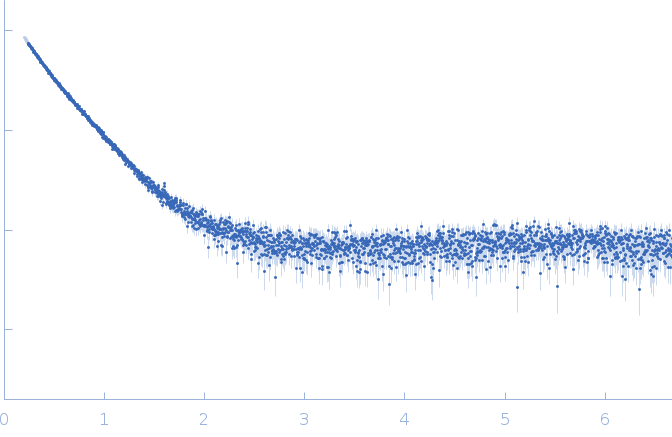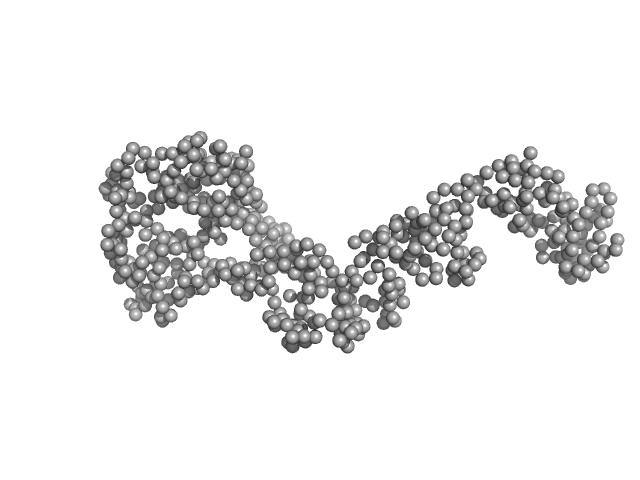|
Synchrotron SAXS data from solutions of Bep1 in 25 mM Hepes, 300 mM NaCl, 1 mM TCEP, 5% v/v glycerol, pH 7.5 were collected on the EMBL P12 beam line at PETRA III (DESY, Hamburg, Germany) using a Pilatus 6M detector at a sample-detector distance of 3 m and at a wavelength of λ = 0.124 nm (I(s) vs s, where s = 4πsinθ/λ, and 2θ is the scattering angle). One solute concentration of 7.80 mg/ml was measured at 35°C. 40 successive 0.095 second frames were collected. The data were normalized to the intensity of the transmitted beam and radially averaged; the scattering of the solvent-blank was subtracted.
|
|
 s, nm-1
s, nm-1
